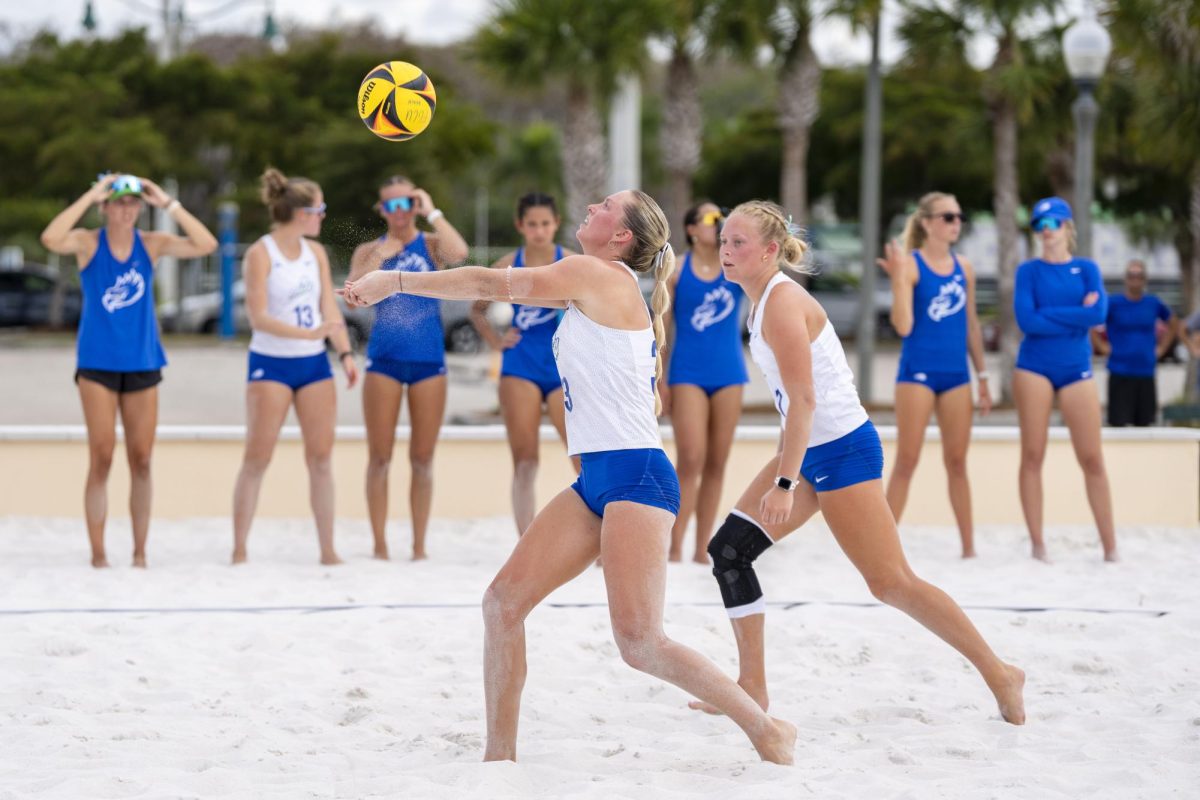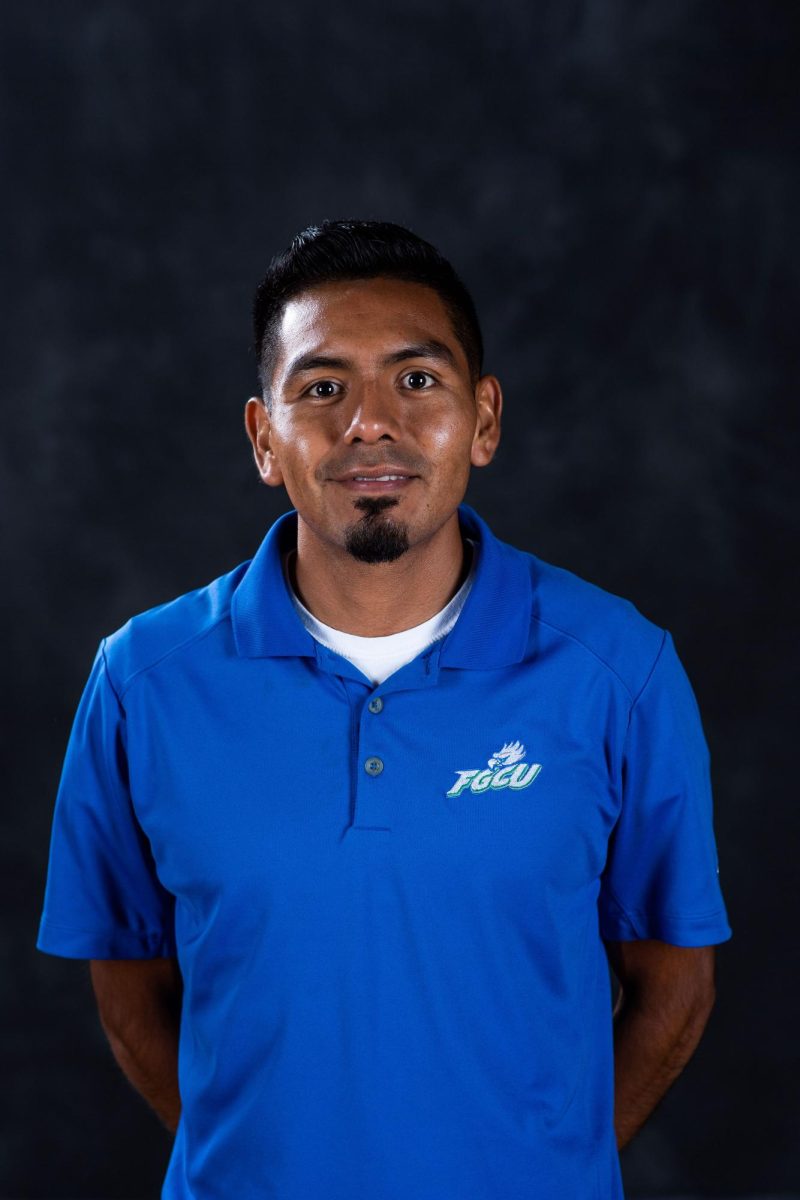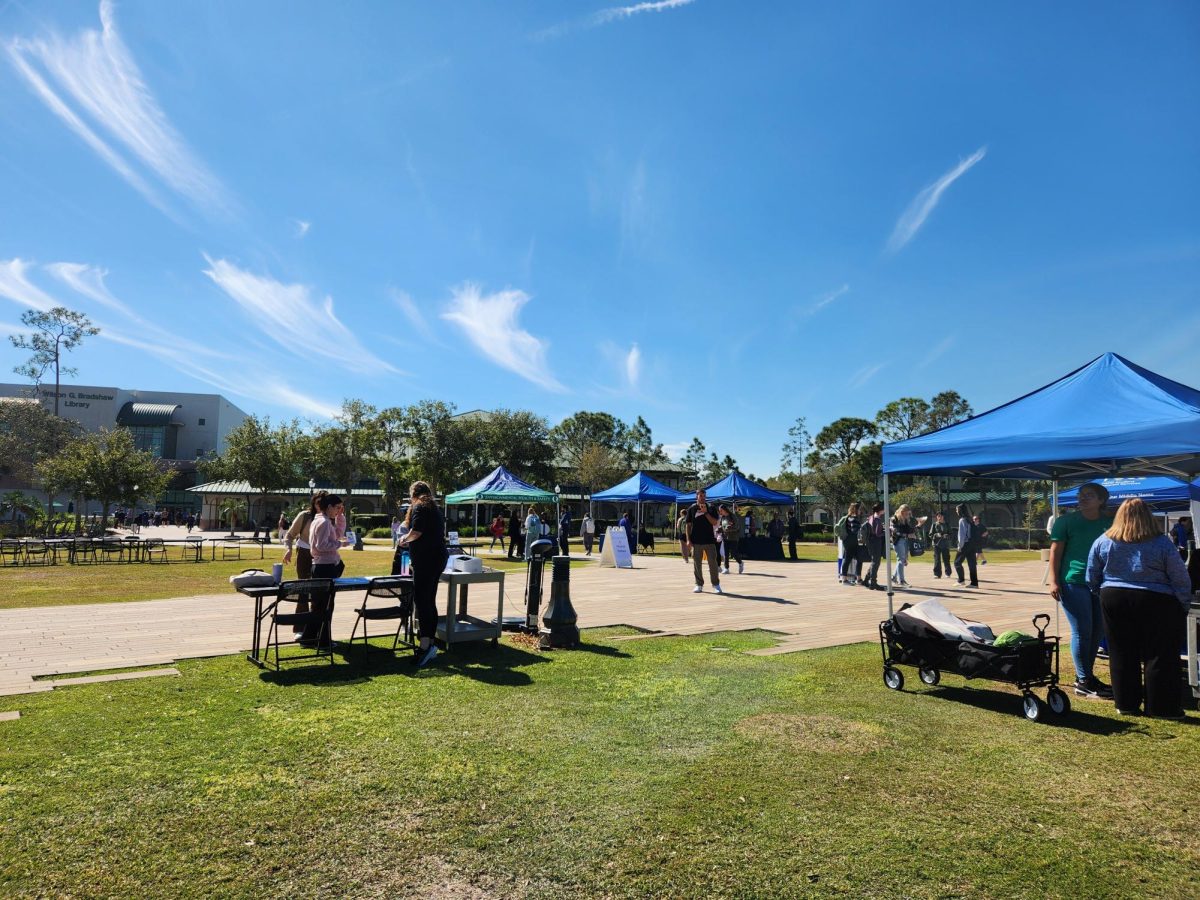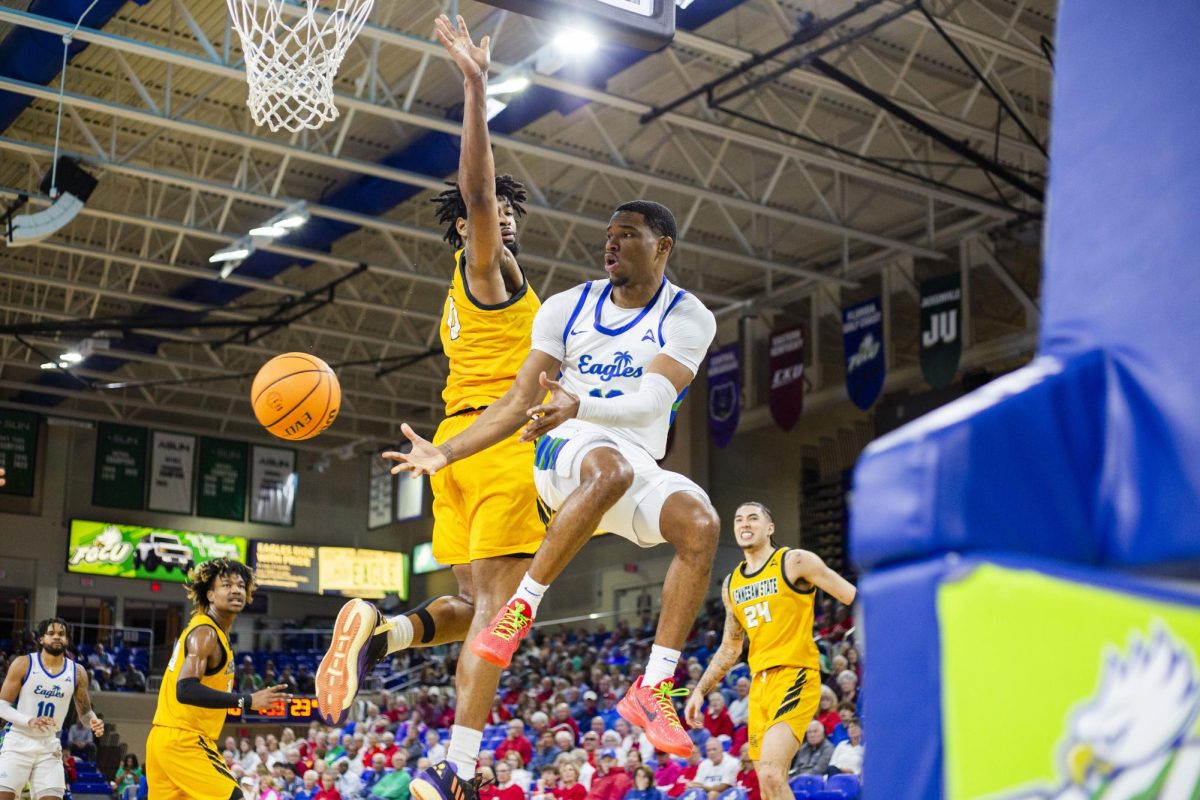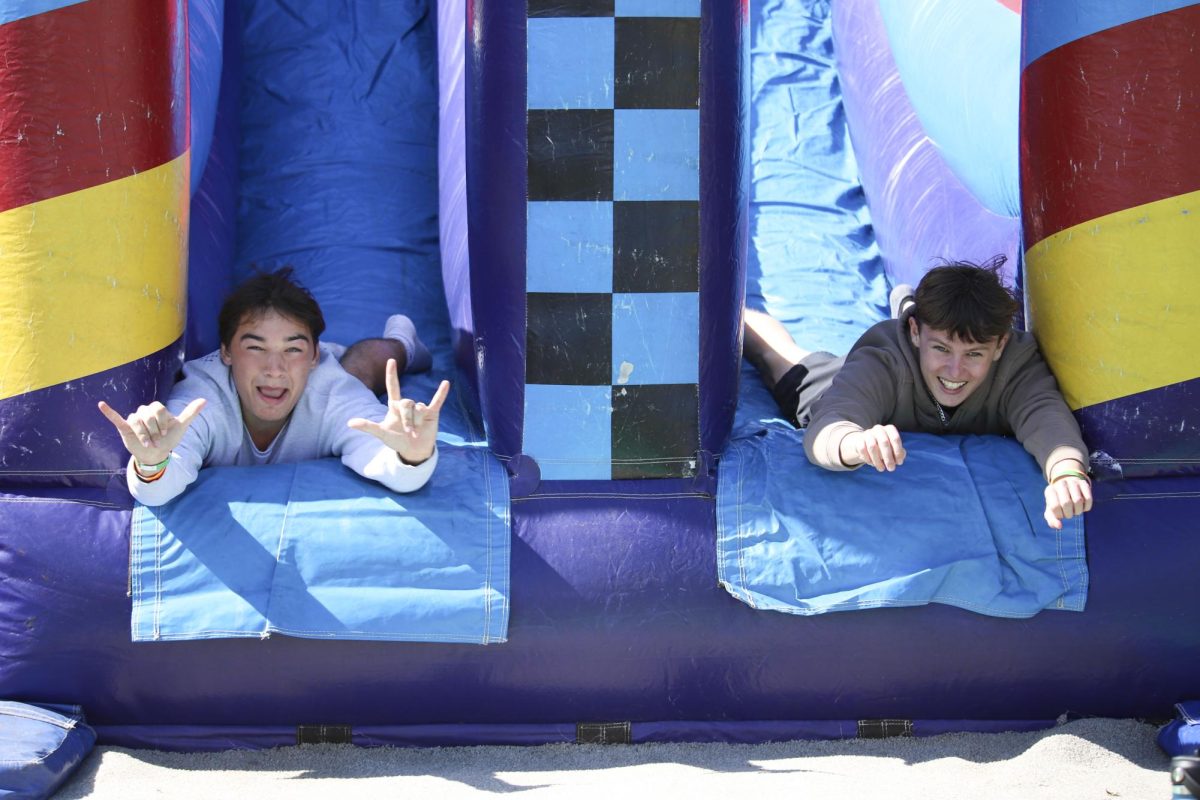FGCU’s art gallery director John Loscuito and events coordinator Joanna Hoch have been planning and coordinating a year-long process of time, effort and hard work toward the FGCU Art Faculty Exhibition. The exhibition is open to the public Aug. 19 through Sept. 24 at the Main Gallery in the Art Complex.
What makes this exhibit so distinct from others is how a range of FGCU studio faculty members are featuring their own artwork. The exhibit will give an opportunity for each participant to showcase a unique artwork and medium. The various mediums include sculptures, paintings, ceramics, digital and printmaking.
“There is no specific theme toward this exhibit except for how each work of art created by a participant will be able to display their own form of expression based upon their creativity and individualism, which will allow a sense of variety,” Loscuito said. “What makes the gallery interesting is how each work of art may be expressed and formed completely different, but by observing the different artworks, it could allow students and peers to be able to make similar connections. In other words, each work of art may have different approaches, but a person may be able to find similarities toward the different content. Perception is key, and everyone perceives artwork differently.”
Morgan Paine, an FGCU associate professor of art, considers himself a painter with purpose and implements it through his art and in his teachings at the university.
“My work in the show is part of a long-standing effort to understand what it is to be a maker of paintings in my own time period,” Paine said. “Painting has a long and complex history. As a painter, I feel an obligation to add to the discipline’s accomplishments, by extending what painting can be.”
Loscuito makes an observational connection about how Paine’s painting expresses layers over time, meaning that each year gets more complex in painting. Students can relate to the message toward Paine’s painting “Layers Over Time,” meaning as time goes by each year, the life’s learning process only gets more complex.
“Work comes from work; one painting suggests and allows the next.” Paine said. “I pay attention to what I have done and what is going on around me. Painting is both a physical and conceptual activity, and it is important to me that we stay in balance with one another. Creating the process by which I paint, the rules of the rules of the game. I am more interested in the starting of the work than I am in the finished product. I expect my peers and my students to have different paths to their work. I encourage them to seek their own way as fiercely as I try to makemy way.”
Paine explains what he looks forward to most during the exhibit.
“The chance to see my peers work is fairly rare,” Paine said. “I expect that spending some time with their studio accomplishments will be rewarding. When Picasso was asked this question about how long it took to complete a drawing, he reputed to have said, ‘My whole life up to now.’ Each work is different, but I tend to work on individual pieces from several months to several years, working on them each day during that span of time.”
Paine explains why he chose this specific artwork for the exhibit.
“I put into the space things that would fit into my allocation of the wall,” Paine said. “I had more things. These were paintings that I had completed and wanted out of the studio to make room for more work.
Paine’s advice for FGCU seniors who will be participating in this year’s Main Gallery Senior Projects includesm “Think before you work; think as you work; think about what you have done; think about what you need to do next.”
Michael Salmond, associate digital media design professor at FGCU, brought the video game, “The Diaries of Professor Ansell; Deceased,” which he created and was inspired by his second book, “Videogame Design, Principles and Practices from the ground up,” published later this year.
“All the talking to game developers and ex-students, who are now working in the video game industry, really compelled me to want to make another game,” Salmond said.
Salmond teaches design courses at FGCU, and his background is in game and interactive design.
“The project really came from wanting to produce a fully working (albeit short) videogame that could become something bigger later on, once I get some feedback from more players,” Salmond said.
Salmond said technology and testing were the most difficult tasks to complete the game.
“Video games are complex,” Salmond said. “Unlike the real world you have to create everything, including gravity. So, it really is building something from nothing and then testing it because missing a collision detector in one spot means the player is going to fall through the world into a void. That doesn’t happen in real life. So, I was working on this solidly for about a month; I had one of my students, Michael Rechkemmer test, troubleshoot and problem solve too, which was very necessary. Having to constantly go back in to fix elements that had broken for whatever reason is frustrating, but it’s a part of the process.”
Salmond encourages FGCU students to pursue their dreams and passions.
“One of the best aspects of a faculty show is that, for me, it shows our students that we don’t just teach these subjects, we work within these disciplines too,” Salmond said. “I hope that the influence would be that my students would appreciate that we do as well as teach. In general we don’t all hang around in each other’s studios, showing off our latest creations. So, this is an opportunity for me to learn about my colleagues work and vice versa.”
Another participating professor is Ehren Gerhard, an FGCU alumnus, who talks about his influences through painting and what urges him to paint his subject.
“I enjoy painting things through the discovery of nature by direct observation,” Gerhard said. “I love to work outside in the heat and start drawing based upon nature that I hope perceives joyous and playful feelings to other people.”
He said he has always been interested in biological earth sciences, so he enjoys constructing and organizing his painting process like those of biological studies.
“First I like to observe and be still, listen and draw everything I directly see,” Gerhard said. “Then I enjoy painting outside and being up later with bug spray.”
Gerhard lives at the Happehatchee Center Community, a nature preserve community located on sacred grounds, which helps with his direct painting observations. He purposely messes with his work and changes something that will challenge his mind for the better or worse.
“It is good to learn how to appreciate mistakes because we are all humans, and we are all perfectly imperfect,” Gerhard said. “It is more fun to embrace your mistakes and learn from them, which is something I like to challengemy art students as well.” There is still time to visit the exhibit at the Main Gallery, and if you are interested in meeting the artists, don’t miss the FGCU Art Faculty Exhibition reception 5 to 7 p.m. Sept. 3 This will give FGCU peers and students the opportunity to meet the faculty and learn more about their artwork.







